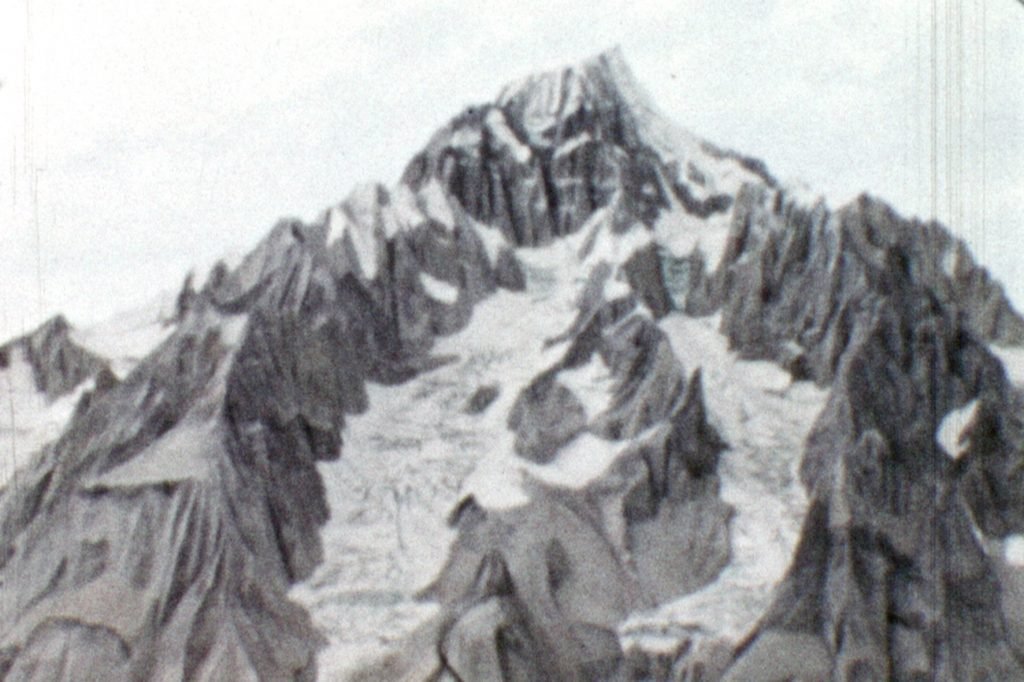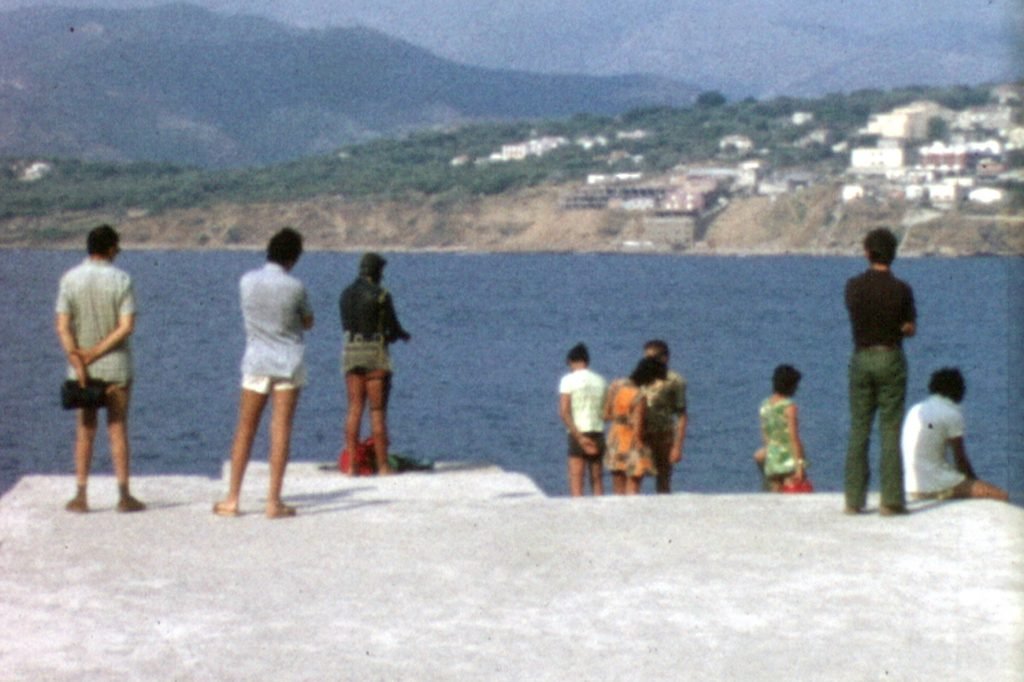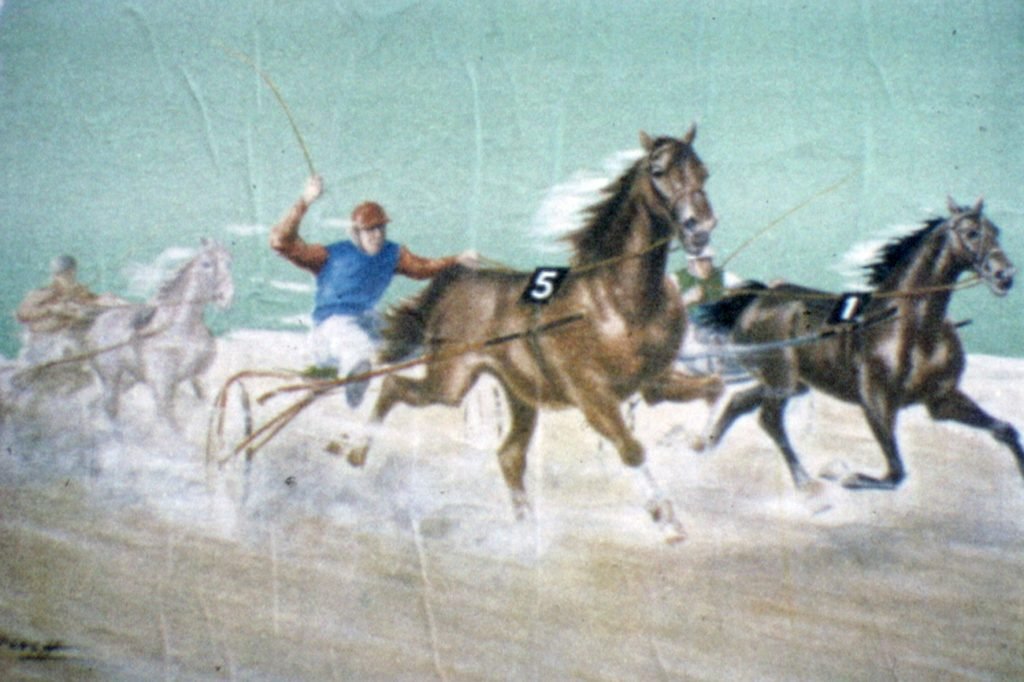GIUSEPPE DE MATTIA
(with Ilaria Ferretti e Paolo Simoni)
in collaboration with HOME MOVIES
La coincidenza dello sguardo
Coincidence of a Glance
Our attention was captured by the frames of amateur moviemakers contemporary with Luigi Ghirri.
These glances and the photographer’s shots have something in common. We’ve tried to isolate the images that bear witness to a closeness if not (im)possible identification.
The project, which grew out of historical reflection on the expansion of image production practices since the second half of the sixties, is an attempt to find correspondences between Ghirri’s photographic research and the proliferation of mass amateur images.
The challenge lay in recreating the Emilian photographer’s imagination (and everything pertaining thereto) of the first period by seeking it precisely in that humus and in that model from which his own artistic research originated. This work is an inquiry into how much amateur film archives in embryo may incorporate unconscious glances that are not so far from the transfiguration of reality carried out by photographers.
The insight therefore arises from coincidences and resemblances, incredible but only apparently random: some frames from home movies made prevalently in Emilia appear almost like unpublished professional shots, charged with a status full of ambiguity and at the same time stimulating.
What brings these frames close to photographic images is the historical, cultural and technological context of which they are part.
The verification which this project triggers is developed in twelve “photographs” from the same number of selected frames found among the thousands that comprise a reduced format cinematographic film. It is precisely in the choice of a frame corresponding to 1/16, 1/18 or 1/24 of a second, in this time interval, that something occurs which usually escapes the amateur moviemakers themselves.
Our intervention aims at narrowing the boundary between someone who films and someone who photographs, inasmuch as it applies the strictly photographic teachings of “seizing the moment” to a means of representation associated from its birth (Étienne-Jules Marey) with the idea of a “hail of shots”.
A selection process mediated by the National Archive of Home Movies from which all the images were drawn.
To render even more illusory the sensation of looking at photographs taken with a camera of the period we chose to have the photos obtained from the frames printed by the same printer who worked for Ghirri, Arrigo Ghi, who produced much of Italian photography in those years and therefore a very precise iconographic apparatus.
We asked him to intervene on the colours, as he would have done in the reference years for our archive research (1967-1976).
Ghi worked on the colours in full autonomy, having received instructions not to intervene on any signs on the film due to wear and tear or on the blurring that appeared from time to time.
Together with the grain of the film, these are the typical elements in home movie images which we didn’t want to alter, retaining them intact in the digital reproduction. Lastly, the technological nature of the process carried out in this project should not be neglected: in its presuppositions and in the results obtained it is a process of remediation of archive material which, as such and with due (and declared) devices, inevitably produces an effect of disorientation and, we hope, poses questions.
A Contemporary Glance
Luca Panaro
I am usually hostile towards artists who attach themselves to the work of another (and there are many of them), especially when the operation takes place (not randomly) at the moment of greatest success of a research that has distant origins. I am no lover of traditionalism and I strongly believe in the artist as receptacle of the technical, formal and conceptual singularities of his own time. At first glance this work did not seem oriented in the direction most congenial to me; rather I saw it linked to the recovery of a past which it aimed to feed at all costs. However, entering slowly into the folds of his research I realized that probably De Mattia has succeeded in touching, as rarely happens, certain fundamental points of our contemporary culture. First of all fiction.
The certainties vacillate faced with these photographs so similar to those of Luigi Ghirri. Even the authorship is compromised. The images are not by the Emilian artist who died in 1992, but neither are they by De Mattia who more than anything else works collectively with Home Movies (Archivio Nazionale del Film di Famiglia). Then the critical approach. Reference must be made to the many artists who have continued for decades to take photos in that manner, a national phenomenon far from exhausted, even if we look at the latest generations. Almost a therapeutic fury, a bereavement not to be elaborated. Also the photographic lifting from a flow of images is a contemporary approach. Film as archive makes us reflect on the dialectic relationship between an image that is static or in motion. De Mattia’s interest in vernacular and authorial photography, therefore for related collecting, is a fundamental feature of our years. Not to neglect the fetishism that still distinguishes the “insiders” today (and not only them), who often adore the photographic subject to the detriment of the message it carries. De Mattia satisfies them by supplying images capable of touching those chords, but with veiled irony. Lastly, the discovery innate in this work. The extraordinary coincidence between the eye of an important artist and the contemporary production of mostly unaware amateur moviemakers, chiefly interested in making family films.
We must however take care not to misunderstand this last point. It is not a case of re-dimensioning the range of Ghirri’s photographic research, levelling it down to amateur status; on the contrary, the operation carried out by De Mattia and Home Movies favours a precise interpretation thereof, bringing out the historical, anthropological and social aspects that inspired it. The awareness above all of looking on like a man of one’s own time, thus putting forward a contemporary glance, a typically Italian way of observing the world at that period, disinclined to the elitist and formal vision of international art. De Mattia and Home Movies’ tribute is therefore a “real” one to certain photography of the seventies and eighties, against the epigones that are still rampant today.
Giuseppe De Mattia (1980) is an artist who employs a dialogue of mediums toinvestigate the relationship between memory and contemporaneity. Photography,video, sound, drawing and painting can all be found and often blend within his work.
Alongside his personal practice, De Mattia collaborates with the collective Coclite/DeMattia and Casa a Mare (with Luca Coclite and Claudio Musso). He currently workswith the Bologna film library and Home Movies – The national family film archive.
He is represented by Matèria in Rome, Maurizio Corraini in Mantova and NowhereGallery in Milan. He publishes his books with Corraini Editore, Danilo Montanari and Skinnerboox. In 2015 he founds ‘Libri Tasso’ an independent artist book self-publishing project.
The National Family Film Archive, founded and managed in Bologna by the Home Movies Association, was created with the aim of saving and transmitting a hidden and inaccessible audiovisual heritage. The unpublished, private and personal audiovisual documentation, collected from the Archive, constitutes a large and precious visual deposit for the Italian history of the twentieth century, which is progressively made public and made available through projects and initiatives.












